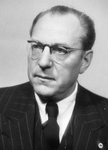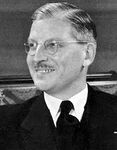1939 Weranian federal election
| |||||||||||||||||||||||||||||||||||||||||||||||||||||||||||||||||||||||||||||||||||||||||||||
All 584 seats to the House of Deputies 292 seats are needed for a majority in the House of Deputies | |||||||||||||||||||||||||||||||||||||||||||||||||||||||||||||||||||||||||||||||||||||||||||||
|---|---|---|---|---|---|---|---|---|---|---|---|---|---|---|---|---|---|---|---|---|---|---|---|---|---|---|---|---|---|---|---|---|---|---|---|---|---|---|---|---|---|---|---|---|---|---|---|---|---|---|---|---|---|---|---|---|---|---|---|---|---|---|---|---|---|---|---|---|---|---|---|---|---|---|---|---|---|---|---|---|---|---|---|---|---|---|---|---|---|---|---|---|---|
| Turnout | 16,117,435 (79.81%) | ||||||||||||||||||||||||||||||||||||||||||||||||||||||||||||||||||||||||||||||||||||||||||||
| |||||||||||||||||||||||||||||||||||||||||||||||||||||||||||||||||||||||||||||||||||||||||||||
File:1939 election map.png | |||||||||||||||||||||||||||||||||||||||||||||||||||||||||||||||||||||||||||||||||||||||||||||
| |||||||||||||||||||||||||||||||||||||||||||||||||||||||||||||||||||||||||||||||||||||||||||||
The 23rd federal election was held in the Weranian Confederation for the House of Deputies (the lower house of the Bundestag) on the 14th March 1939. All 584 members of the House of Deputies were elected under a system of proportional representation with each regierungsbezirke treated as an electoral districts. These would be the second elections held following the Great War after the expiration of the term of the House of Deputies.
The election came as the country suffered from an inflationary spiral in the post-war period triggered by the devaluation of the mark and the removal of wartime price controls. The outgoing centrist government of the Catholic Social, Social Democratic and National Liberal parties led by NLP leader Walther von Pittermann was unpopular with its slim parliamentary majority making it increasingly ineffective in passing legislation. In March a dispute over planned wage cuts in line with the government's incomes policy caused the left-wing of the SPO to trigger a vote of no confidence against the von Pittermann cabinet causing it to collapse.
Persistent economic woes, labour disputes and social polarisation had raised the prospect of left-wing government gaining power. The right however were divided with the National Liberals advocating for a centrist government whilst the Catholics and the conservatives advocated for a union of the right. The centre-left Radical party meanwhile was vague surrounding the prospect of entering a government including or supported by the OSAI instead supporting social reform.
The election saw the parties of the outgoing government - the KSP, NLP and SPO - losing seats whilst both the OSAI and Radicals gained, making it the best result for left-wing parties since the 1918 election. The Ruttish Sotirian Democratic Party entered the Bundestag for the first time. As a result the Radicals under Lothar Kuehnelt formed a coalition government with the SPO that relied on the OSAI for parliamentary supporting, making it the first centre-left government in Werania since 1919.





